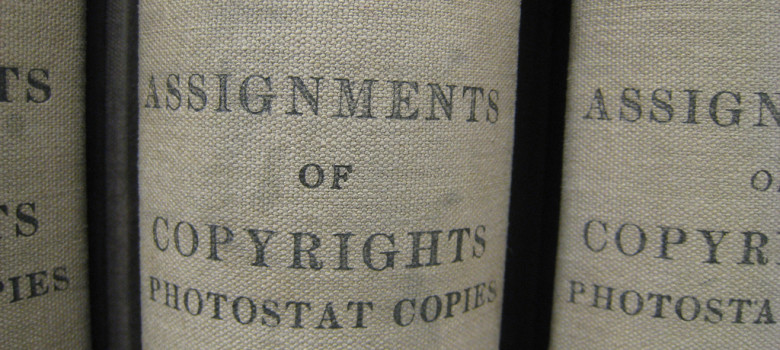In December 2017, the government launched its copyright review with a Parliamentary motion to send the review to the Standing Committee on Industry, Science and Technology. After months of study and hundreds of witnesses and briefs, the committee released the authoritative review with 36 recommendations that include expanding fair dealing, a rejection of a site blocking system, and a rejection of proposals to exclude education from fair dealing where a licence is otherwise available. The report represents a near-total repudiation of the one-sided Canadian Heritage report that was tasked with studying remuneration models to assist the actual copyright review. While virtually all stakeholders will find aspects they agree or disagree with, that is the hallmark of a more balanced approach to copyright reform.
This post highlights some of the most notable recommendations in the report that are likely to serve as the starting point for any future copyright reform efforts. There is a lot here but the key takeaways on the committee recommendations:
- expansion of fair dealing by making the current list of fair dealing purposes illustrative rather than exhaustive (the “such as” approach)
- rejection of new limits on educational fair dealing with further study in three years
- retention of existing Internet safe harbour rules
- rejection of the FairPlay site blocking proposal with insistence that any blocking include court oversight
- expansion of the anti-circumvention rules by permitting circumvention of digital locks for purposes that are lawful (ie. permit circumvention to exercise fair dealing rights)
- extend the term of copyright only if ratifying the USCMA and include a registration requirement for the additional 20 years
- implement a new informational analysis exception
- further study of statutory damages for all copyright collectives along with greater transparency
- adoption of an open licence rather than the abolition of crown copyright
My submission to the Industry committee can be found here. The submission and my appearance is cited multiple times in the report and I’m grateful that the committee took the submissions from all witnesses seriously.
More Data, Less Study
Having spent a year studying copyright, it is clear that the Members of Parliament do not want to do this every five years. The report’s first recommendation is to repeal the requirement to review the law every five years, noting that frequent reviews increases the politicization and polarization of copyright without enough time to fully assess the effects of prior amendments. This is a welcome recommendation as is the committee’s recommendation for more data on copyright from Statistics Canada and the creation of research chairs focused on copyright remuneration and economics.
Fair Dealing
Based solely on the number and length of the footnotes, it is readily apparent that fair dealing, particularly educational fair dealing was a dominant issue at committee. The committee concluded that much of the change over the past five years is due to Canadian publishers struggling to adjust to market disruptions that are unrelated to the 2012 copyright reforms. Indeed, the committee notes that “the decline of collective licensing in education has arguably more to do with technological change than it does with fair dealing.” The committee was concerned with developments in the area but ultimately rejected the recommendation of the publishers and copyright collectives:
The Committee cannot endorse the proposal to limit educational fair dealing to cases where access to a work is not “commercially available,” as defined under the Act. While licensing should be encouraged, this proposal risks reducing flexibility in the educational market by favouring blanket over transactional licensing.
Instead, it calls for the government to facilitate efforts to achieve consensus on fair dealing and to review the issue again within three years.
Having dismissed the proposal to limit educational fair dealing, the committee then addresses the restrictive nature of an exhaustive list of fair dealing purposes. At long last, it recommends adopting the “such as” approach to make the current list illustrative rather than exhaustive:
Parliament should make the list of purposes enumerated under section 29 of the Act an illustrative list rather than an exhaustive one. Doing so would increase the flexibility of the Act by allowing a broader range of admissible purposes to emerge from existing ones under the guidance and the supervision of the courts—for example, from criticism to quotation, from parody to pastiche, and from research to informational analysis. Such an amendment could allow new practices to fall under fair dealing, such as “reaction videos” and video game streaming. The Committee emphasizes that the purpose of a dealing is only one of many factors taken into account when determining whether this dealing is indeed fair under section 29 of the Act.
The increased flexibility would make the Canadian fair dealing provision closer to the U.S. fair use model, but retain the certainty that comes with decades of jurisprudence on the issue.
The committee also called for the introduction of at least one new exception: informational analysis, the Canadian equivalent of a text-and-data mining exception to facilitate artificial intelligence and machine learning activities.
Internet Safe Harbours and Site Blocking
The committee report provides an extensive review of safe harbours for Internet platforms and ISPs.The committee rejected proposals to limit the safe harbour provisions in the Copyright Act. In fact, the committee even expresses concern with bringing notice-and-takedown to Canada:
The Committee finds it questionable, for example, that an OSP’s content management policies would require taking down or de-monetizing content uploaded on a platform before giving its uploader the opportunity to respond to allegations of copyright infringement.
Instead, it simply calls for ongoing monitoring of developments around the world.
With respect to site blocking, the committee rejects the creation of an Internet piracy system such as the FairPlay proposal, concluding that the courts must be involved:
The Committee does not, however, support the development of an administrative regime to these ends. It is for the courts to adjudicate whether a given use constitutes copyright infringement and to issue orders in consequence. The courts already have the expertise necessary to protect the interests of all involved parties.
It therefore recommends changes to facilitate court orders, subject to “paramount importance be given to net neutrality in dealing with impacts on the form and function of Internet in the application of copyright law.”
Fixing the 2012 Law: Digital Locks, User Generated Content and Notice-and-Notice System
The committee provides several recommendations designed to address shortcomings arising from the 2012 reforms. For example, it examined the issue of the restrictive approach to Canada’s anti-circumvention rules, often referred to as digital locks. The committee recommended adding much needed flexibility by allowing circumvention for purposes otherwise permitted under the Copyright Act:
However, it agrees that the circumvention of TPMs should be allowed for non-infringing purposes, especially given the fact that the Nintendo case provided such a broad interpretation of TPMs. In other words, while anti-circumvention rules should support the use of TPMs to enable the remuneration of rights-holders and prevent copyright infringement, they should generally not prevent someone from committing an act otherwise authorized under the Act.
This change – which was widely recommended when the law was first established – would ensure that fair dealing rights are treated in an equivalent manner in both the analog and digital worlds.
The committee also recommends review of the user-generated content provision to ensure that creators of non-commercial USG are not held liable for unintended copyright infringement.
The committee recommends keeping the notice-and-notice system but wants to fix the problem of notices with settlement demands still being forwarded by ISPs due to the challenge of easily identifying the content of notices. To address the issue, it recommends new regulations that require a machine-readable format to better automate the system.
Term Extension
The committee noted that it heard arguments both in favour and against copyright term extension (in a telling comment, the Canadian Heritage report said it did not hear from anyone who opposed term extension). The committee recognized there may no alternative but to extend copyright given the USMCA, but it recommended limiting the harm by only doing so if the agreement is ratified. Moreover, it recommended establishing a registration requirement for the additional 20 years:
The Committee believes that requiring rights-holders to register their copyright to enjoy its benefits after a period equal to the life of the author plus 50 years would mitigate some of the disadvantages of term extension, promote copyright registration, and thus increase the overall transparency of the copyright system.
As part of its copyright term recommendations, the committee also recommends establishing a reversion right for creators after 25 years, an approach that matches the Canadian Heritage recommendation.
Statutory Damages
The committee rejected calls for eliminate the non-commercial statutory damages cap established in 2012. Instead, it calls for amendments that would keep both the upper and lower limits consistent with inflation.
The committee also stops short of calling for statutory damages being added in all copyright collective cases as was sought by Access Copyright. However, it was sympathetic to the arguments, therefore calling on the government to evaluate the forms of statutory damages available, recommending:
The Committee is thus inclined to allow any collective society to recover an award in statutory damages but finds the current section 38.1(4) of the Act to be inadequate to implement such a policy. Should Parliament extend this remedy to all collective societies as well as the rights-holders who have authorized them to act on their behalf, it should do so with a more sophisticated regime that reflects, notably, the following policy objectives: encouraging fair licensing practices, deterring copyright infringement, enabling courts to award proportional statutory damages that account for different types of tariffs, and ensuring that proceedings before the Board proceed efficiently and in a timely manner.
Copyright Collective Transparency
The report features two recommendations on copyright collective transparency:
Recommendation 35
That the Copyright Board of Canada review whether provisions of the Copyright Act empower the Board to increase the transparency of collective rights management to the benefit of rights-holders and users through the tariff-setting process, and report to the House of Commons Standing Committee on Industry, Science and Technology within two years.
Recommendation 36
Given the important role of collective societies in the copyright framework and in the collective administration of rights, that the Government of Canada consider the benefits and mechanisms for increasing the transparency of collective societies, particularly with regards to their operations and the disclosure of their repertoire.
Crown Copyright
It would appear that crown copyright was among the most contentious issues among committee members as it garnered dissenting opinions from both the Conservatives and NDP. Both opposition parties recommended the abolition of crown copyright. The report (the Liberals on this issue) stopped short of recommending the abolition of crown copyright, calling instead for the adoption of an open licence. The full recommendation is lengthy and complicated, seeking to increase access but retain some government powers over works.
Emerging Issues
One of the very first recommendations addresses indigenous copyright issues with several recommendations for further action. This issue has certainly captured the attention of the committee and is likely to receive increased focus on the months ahead.
The committee stops short of recommending a new artists’ resale right (as the Heritage report did). Instead, it calls for a consultation on the issue with a report back to the committee within three years. The Conservatives dissented from the recommendation.
The committee includes a termination right for artists recommendation that is consistent with the imbalance between creators and publishers/record labels. The report notably cites Music Canada’s Graham Henderson to counter concerns that termination would hurt the sector, stating:
The notion that providing a termination right to creators would somewhat hinder the economic exploitation of copyrighted content suggests that creators lack entrepreneurship, but like Graham Henderson, President and CEO of Music Canada, said, “every musician is a businessman, now more than ever.”
The committee also called on the government to consider amending the law to clarify ownership of computer-generated works.
Despite calls from some to adopt EU-style linking rights, the committee did not recommend those reforms. Instead, it called for a study by Canadian Heritage on remuneration of journalists, the revenues of news publishers, the licences granted to online service providers and copyright infringement on their platforms, the availability and use of online services, and competition and innovation in online markets, building on their previous work on Canada’s media landscape.












Pingback: The Canadian government has released the surprisingly sensible results of its extensive, year-long review of copyright law | Puffin Computers
Pingback: Canadian Copyright Review Rejects Site-Blocking Regime and Upload Filters - TorrentFreak
Pingback: Canadian Copyright Review Rejects Site-Blocking Regime, Keeps Safe Harbors - Pin System
Pingback: Canadian Copyright Review lehnt Site-Blocking-Regime ab und schützt die Häfen › Yoschis Blog
Pingback: Canadian Copyright Review Rejects Site-Blocking Regime, Keeps Safe Harbors » LTV Tech
Pingback: Canadian Copyright Review Rejects Site-Blocking Regime, Keeps Safe Harbors – Nodi 18.0 – The #1 Kodi Fork Alternative!
Pingback: Canadian Copyright Review Rejects Site-Blocking Regime, Keeps Safe Harbors | StreamDroid.org
Pingback: Canadian Copyright Review Rejects Site-Blocking Regime, Keeps Safe Harbors – Curtis Ryals Reports
Pingback: Canadian Copyright Review Rejects Site-Blocking Regime, Keeps Safe Harbors - Let's Crack On
Pingback: Canadian Copyright Review Rejects Site-Blocking Regime, Keeps Safe Harbors – ABP
Pingback: The Future of Canadian Copyright Looks Bright | Internet Archive Blogs
Pingback: Canadian Copyright Review Rejects Site-Blocking Regime, Keeps Safe Harbors | Crypto Cabaret
Pingback: The Future of Canadian Copyright Looks Bright | Internet Archive Blogs
Pingback: New Canadian Report Offers Balanced Recommendations for Progressive Copyright Reform - Cloudmix
Pingback: The Authoritative Canadian Copyright Review: Industry Committee Issues Balanced, Forward-Looking Report on the Future of Canadian Copyright Law | infojustice
Pingback: Canadian Copyright Review Rejects Site-Blocking Regime, Keeps Safe Harbors > Lee TV Tech
Pingback: "A More Balanced Approach to Copyright Reform": Michael Geist On the Statutory Review of the Canadian Copyright Act | Authors Alliance
Pingback: New Canadian Report Offers Balanced Recommendations for Progressive Copyright Reform – in.iAlbion.com